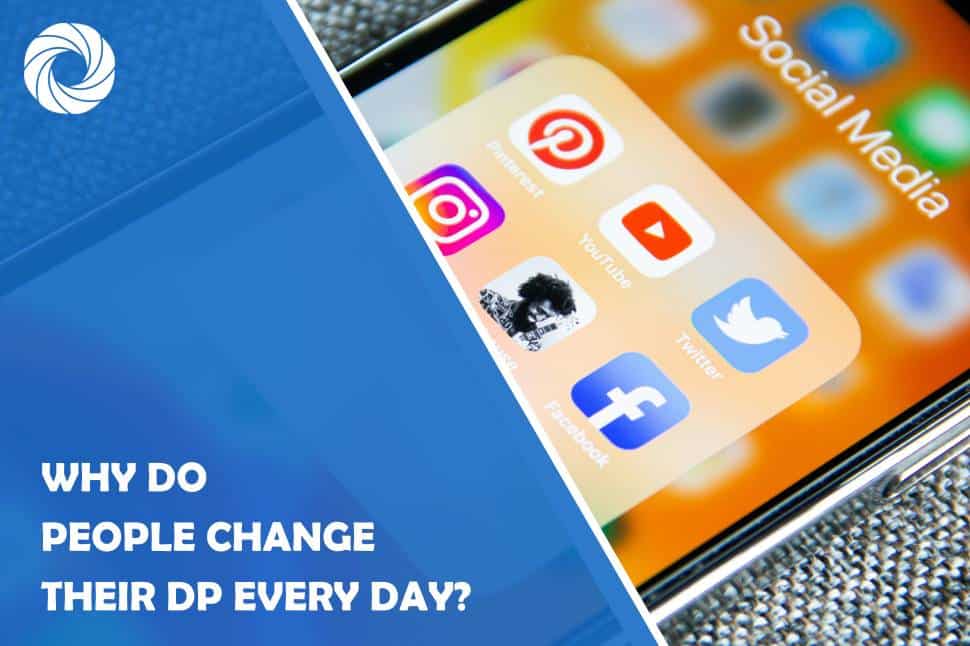In the ever-evolving landscape of social media, where every click and scroll is a glimpse into the curated lives of others, one phenomenon stands out: the daily change of profile pictures. Imagine scrolling through your feed and witnessing a kaleidoscope of faces—some familiar, some fleeting—as friends and acquaintances opt for fresh snapshots to represent themselves. It’s not just a simple act of updating an image; it’s a statement about identity, mood, and connection in an increasingly digital world.
But what drives this incessant desire for visual reinvention? Is it an expression of creativity or merely a reflection of our fast-paced lifestyles? For many, changing their display picture (DP) daily has become as habitual as their morning coffee routine—a subtle yet powerful means to communicate emotions or milestones without uttering a single word. In this article, we delve into the psychology behind this trend, exploring how personal branding, societal expectations, and even fleeting moments can prompt users to reinvent their digital selves on such a regular basis. Join us as we uncover the motivations that lie beneath those constantly shifting images.
Self-Expression and Identity
Self-expression through digital profiles serves as a powerful avenue for individuals to explore and showcase their evolving identities. In a world where our online presence often speaks louder than words, changing one's display picture (DP) becomes an act of personal storytelling. Each new image captures not just a moment in time but reflects emotional states, cultural shifts, or personal milestones, inviting others to partake in the tapestry of our lives.
Moreover, the fluid nature of identity today allows people to embrace various facets of themselves without rigid constraints. A daily change in DP can signify resilience after hardship or joy during significant life events—moments that may otherwise go unnoticed in the rush of everyday living. This practice encourages a diverse representation of selfhood where each snapshot contributes to an ever-evolving narrative, reminding us that identity is not static but rather a dynamic interplay between experience and perception.
Engaging with this phenomenon urges us to reconsider traditional concepts of identity as fixed attributes. Instead, we come to understand it as an ongoing dialogue with ourselves and others—one that invites creativity and authenticity while challenging societal norms about how we present ourselves. In this digital age where the visual language reigns supreme, every change is an opportunity for renewal: a chance not just to express who we are today but also who we aspire to become tomorrow.


As social media continues to evolve, the dynamics of user engagement shift with it. One notable trend is the rise of fleeting content, epitomized by platforms like Snapchat and Instagram Stories. Users are increasingly drawn to ephemeral updates that convey a sense of immediacy and authenticity, making the act of changing profile pictures or display photos (DPs) daily more than just an aesthetic choice; it’s a way to capture fleeting moods and moments. In this environment, where visual storytelling reigns supreme, DPs have become digital canvases for self-expression that reflect not only current emotions but also overarching life narratives.
Moreover, the quest for individuality in an overcrowded digital landscape drives many to update their DPs regularly. In an age dominated by curated feeds and social validation metrics like likes and shares, users often utilize their profiles as a canvas for creative expression. By frequently changing their DPs, they can showcase evolving identities or newfound interests while simultaneously beckoning engagement from peers. This behavior transcends simple vanity; it's rooted in a deeper desire for connection and resonance within one’s community amidst the rapid flux of online interactions.
Ultimately, these trends underscore how our digital presence is intricately tied to personal identity in today’s fast-paced world. Social media acts as a mirror reflecting users’ interests and sentiments at any given moment—each DP change tells a story that invites others into these evolving narratives. For many, this dynamic act becomes an essential part of navigating relationships in virtual spaces where visibility equates to relevance and recognition can feel significantly meaningful.
Attention-Seeking Behavior
Attention-seeking behavior often manifests in various forms, and changing one’s display picture (DP) daily is a telling example. This behavior can stem from a deep psychological need for validation or connection, reflecting our intrinsic desire to be seen and recognized. In the digital age, where social media reigns supreme and interactions can feel superficial, altering a DP might serve as an immediate way to grab attention in an overcrowded feed. Each new image serves not just as a visual reset but also as a conversation starter, inviting engagement through likes and comments that temporarily satiate those cravings for acknowledgment.
Moreover, frequent changes in DPs can act as a form of self-exploration or reinvention. With each update, individuals may express different facets of their personality or current emotional states—a vibrant sunset on one day could represent joy, while a black-and-white portrait the next hints at introspection. This versatility provides users with an opportunity to craft their online identity actively; it’s not merely about garnering attention but about curating how they wish to be perceived by others. Consequently, every swap tells its own narrative—one that reflects personal growth or shifting moods—and ultimately serves as both armor against anonymity and an invitation for deeper social interactions amidst the virtual noise.
Highlighting significant life events plays a pivotal role in our ongoing quest for identity and self-expression, especially as we navigate the digital landscape. Every milestone, whether it’s a birthday celebration, graduation day, or even an captured candid moment with friends, transforms into a visual representation of our personal narrative. When individuals update their display pictures (DPs), they’re not merely swapping images; they’re chronicling their evolving stories and embracing the present time. These small acts can serve as milestones on one’s journey—each change a way to celebrate progress or reflect on transformative moments.
Moreover, altering DPs invites others into one’s world while fostering deeper social connections. A new picture might spark conversations about shared experiences or memories associated with that event. In this age where visual communication overrides traditional dialogue, people are increasingly using imagery to convey emotions and sentiments that words may fail to capture. With each DP change, there's an opportunity to evoke nostalgia or inspire admiration among peers—essentially making every update not just a personal statement but also an invitation to others to acknowledge and engage with one's life's adventures.
Highlighting Life Events
Psychological factors underlying the daily change of display pictures (DPs) reveal a deeper connection to identity and self-expression. Each image serves as a canvas through which individuals articulate their internal narratives, reinforcing their sense of belonging and uniqueness. This act can also be a response to external social pressures; by curating an appealing online persona, users often strive for validation in a digital landscape that thrives on visual impacts.
Moreover, the phenomenon taps into an innate psychological need for recognition and approval from peers. Changing one's DP frequently can create anticipation and engagement among followers—this continuous refresh keeps online interactions dynamic and lively. Furthermore, it reflects transient emotions or life phases; a joyful moment captured in a photo might resonate more than yesterday’s mundane routine, allowing users to share slices of their current feelings rather than showcasing static identities.
Interestingly, this behavior may also be rooted in established behavioral theories such as the “loss aversion” principle. Users subconsciously fear missing out (FOMO), leading them to adjust their DPs regularly to stay relevant within rapidly shifting social trends. In doing so, they harness both collective recognition and emotional resonance—using images not just as representations of who they are at that moment but as strategic tools for navigation within complex social networks.
In conclusion, the phenomenon of changing profile pictures daily reflects deeper psychological and social dynamics at play in our digital age. For many, a new DP serves as an expression of self-identity; it embodies their evolving moods, interests, or significant life events. This constant evolution invites friends and followers into a more personal narrative, fostering connections that might otherwise remain superficial. As individuals curate their online personas, they seek validation through likes and comments, navigating the fine line between authenticity and performance.
Moreover, this practice can also signify a broader cultural shift towards visual communication over textual interaction. In an era where attention spans are fleeting and images speak louder than words, these brief moments of visual storytelling create an ongoing dialogue among peers. The act of regularly updating one’s DP has become not just a matter of personal choice but rather a modern social ritual that enhances community engagement and keeps relationships vibrant in our increasingly virtual world.
Conclusion
In conclusion, the daily changing of display pictures (DPs) is more than just a trend; it reflects deeper psychological and social dynamics. For many, altering their DPs serves as a form of self-expression, allowing individuals to curate their digital identities in ways that align with their evolving emotions or experiences. This constant reinvention offers a sense of control and adaptability in an unpredictable world.
Moreover, the interaction between users becomes a vital aspect of this behavior. A fresh DP can reignite conversations or spark interest in one's social circles, transforming the mundane into engaging dialogue. It fosters connections by inviting viewers to ask questions about the change—a simple image morphing into an opportunity for storytelling and sharing personal narratives. Thus, the habit of changing DPs frequently not only caters to personal creativity but also strengthens ties within our networks, highlighting our innate desire for connection and recognition in an increasingly digital society.
